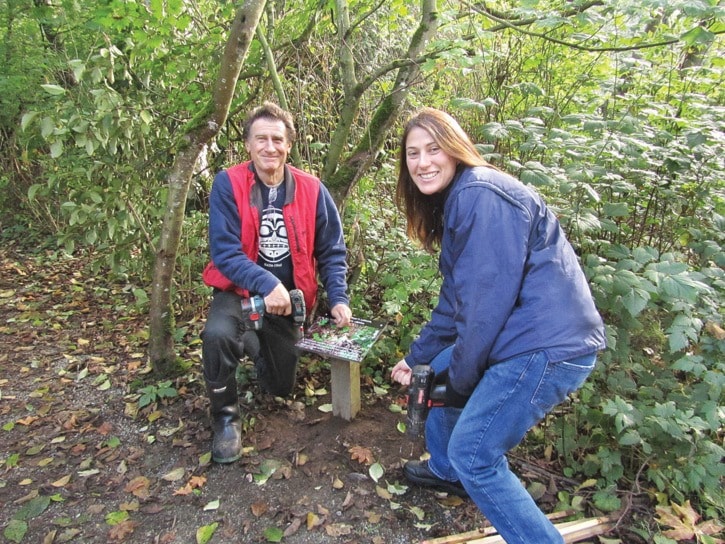Friends of Semiahmoo Bay Society unveiled a new look for the Little Campbell River forest trail last week, marking 10 years of dedication to community stewardship in the area.
The society, in conjunction with the Little Campbell Hatchery and the Semiahmoo Fish and Game Club, have completed numerous upgrades to the trail including gathering spots, signs and asphalt to decrease slipping.
The aim of the upgrades is to make the trail educational and more welcoming to all people, society president Margaret Cuthbert said.
“We wanted to improve the trails to make them safer and more accessible for people with special needs and we wanted to create gathering places for the community and school groups,” Cuthbert said.
“Rather than being strung down the trail and unable to hear, people can meet and discuss.”
And with the new informative signs detailing various aspects of the trail there will be lots of things to discuss.
According to Cuthbert, there are 75 plant signs that will give trail-goers a bit of information about them and then larger signs that provide information about the wildlife in the area including Coho and Chinook salmon.
“It’s a wonderful way to teach people – like a demonstration,” said Cuthbert.
“People will take this interpretive experience and go to places when they travel and know what they see, whether it’s a nursing log or our native plants, they will know.”
This is just one of many projects that the FoSBS has undertaken during its 10 years of service.
In 2001 members initiated a project with Semiahmoo First Nations’ then-Grand Chief Bernard Charles to restore vegetation and wildlife habitat to the estuary of the Little Campbell River.
Over the years, the volunteers have worked on other restoration efforts – planting and installing native plants in the community.
